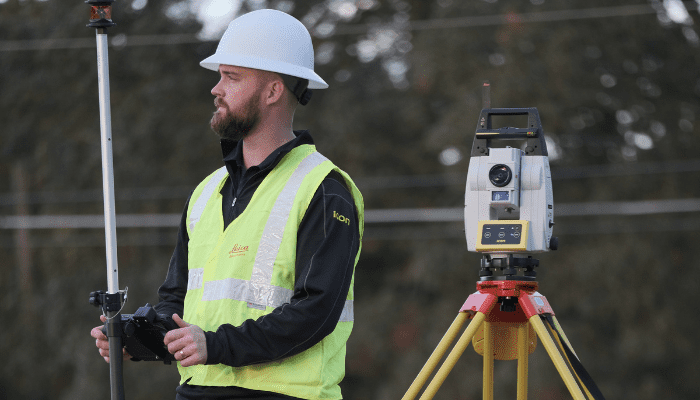Point Clouds of Possibility: the Evolution of Laser Scanning Technology Delivers Cost, Time, and Long Term Efficiencies

Laser scanning—the digital capture of objects using a line of laser light to produce a surface—has been around for decades. It came to prominence in the survey, engineering, and construction space in the 1990s. Like any other technology, 3D laser scanners have gotten faster and smaller and have the ability to collect more data than ever.
The value of laser scanned data is in the deliverable—a point cloud of highly accurate, measurable as-built conditions. Because point cloud files are extraordinarily large, often terabytes of data, the management, visualization, and storage of data have had to evolve as well.
Yet, many industry professionals are still reluctant to invest in the technology. The perception is that it’s expensive and can’t be justified on the job where a tape measure and camera seem to work just fine.
In today’s fast-track construction space, where efficiency is essential to success and profit margins are tight, laser scanning can reduce the chance of costly disconnects in the field, material overages, and miscommunication with team members and clients. The following looks at the evolution of laser scanning and its capabilities and possibilities along with a few examples of real-world ROI.
The Evolution
3D laser scanners today are vastly different than they were even three years ago. One of the many advantages of a 3D scanner in construction is the ability to capture digital 3D models with full detail with extremely low error, in some cases less than a mm—in minutes.
As well, today’s solutions are more portable, automated, intuitive, and very fast.
For instance, the Leica RTC360 laser scanner with an advanced HDR imaging system has a measuring rate of up to 2 million points per second with a range of 130 meters and can gather colored 3D point clouds in under 2 minutes. The 12 lb. scanner also incorporates cloud-to-cloud field registration on the fly in the field. And with its industrial-grade 256GIG USB stick, operators can quickly transfer data back to the office. The scanner’s portable design and collapsible tripod fit into a backpack.
The Visual Inertial System (VIS) technology with its five cameras automatically tracks the position and movement of the scanner from station to station, coordinating the scanner relative to the previous set up. VIS virtually knows where it is placed and is preregistering points on the fly.
Today’s scanners are more portable, automated, intuitive, and very fast
With technology such as VIS, post-processing is very fast. On-site, operators can automatically capture, register, and examine scan and image data from a tablet. The user interface combines easy handling of complex calculations with graphical user guidance which offers a remarkable user experience also for novice users. As well, voice recordings, video, images, text, or documents, can be tagged to each scan and positioned accurately in the point cloud.
It’s even smaller, lighter little brother, the BLK360 is a 3D scanner with an integrated spherical imaging system and thermography panorama sensor system. It measures only 6.5 inches tall and weighs only 2.2 pounds, captures 360,000 points per second and range is 60 meters. The BLK360 takes less than 3
minutes to complete a full-dome scan (in standard resolution) and 150 MP spherical image generation. The BLK360 can also be used with the
Leica Cyclone FIELD 360 mobile-device app, users can link the scan data on the fly in the field. Then wirelessly transfer the scan data to Leica Cyclone or REGISTER 360 to finalize and export to multiple formats.
Leica Cyclone FIELD 360 app for the iPad will also allow tagging of measurements, videos, images, text or voice files to the point cloud. No more looking through project directory folders to try to find the photos for “the mechanical room in building 3” and, even if found, no clarity about what area of the room is shown. With Cyclone FIELD 360’s geo-tagging, site visit data is always easily located.
Today’s scanners and associated software offer high performance, improved work-flows, and more portability for less cost.
